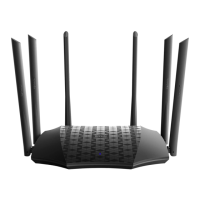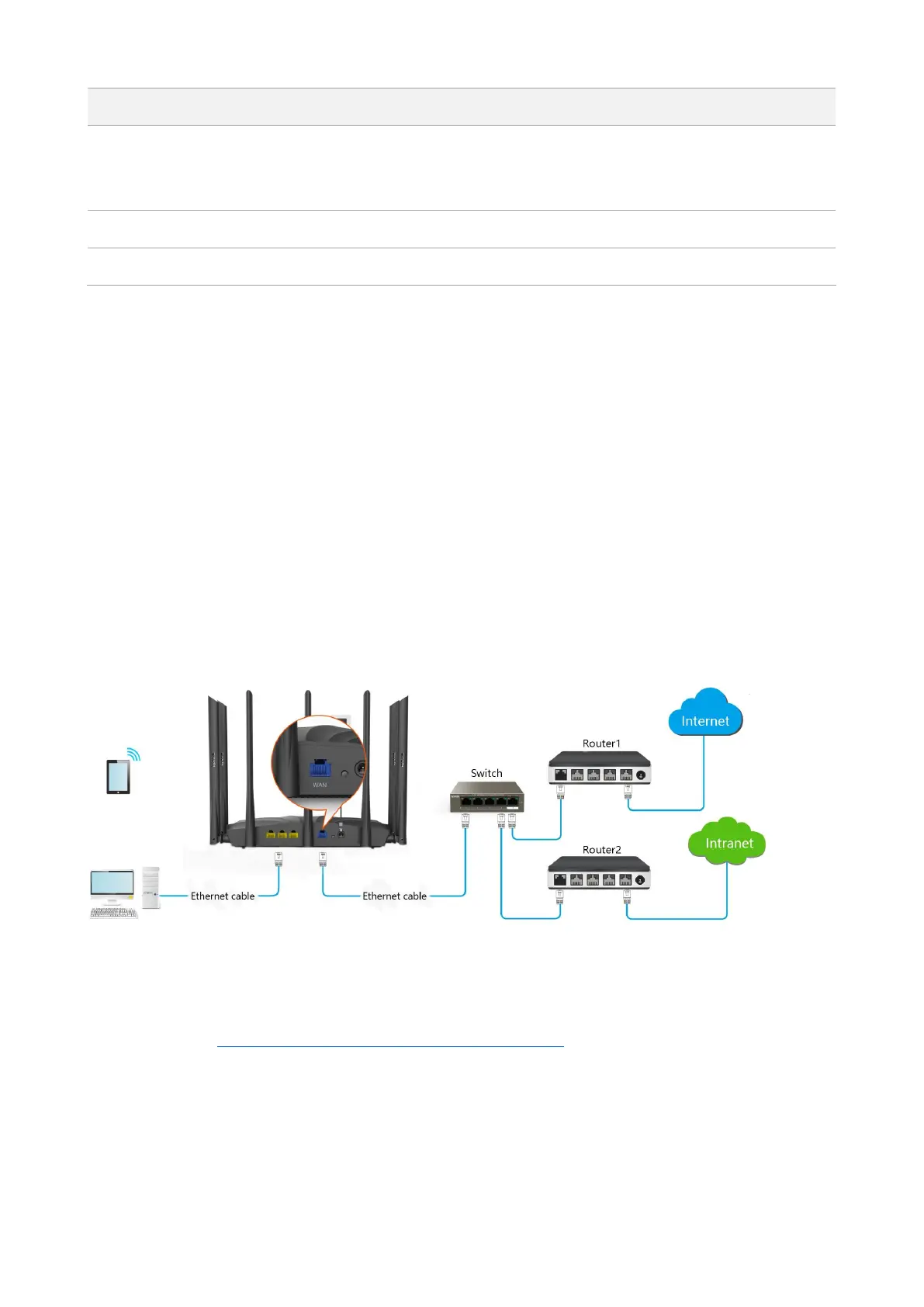
 Loading...
Loading...
Do you have a question about the Tenda AC21 and is the answer not in the manual?
| USB port | No |
|---|---|
| DC-in jack | Yes |
| Connectivity technology | Wireless |
| Ethernet LAN (RJ-45) ports | 3 |
| Product type | Tabletop router |
| Product color | Black |
| LED indicators | LAN, System, WAN, WLAN, WPS |
| Wi-Fi band | Dual-band (2.4 GHz / 5 GHz) |
| Wi-Fi standards | 802.11a, 802.11b, 802.11g, Wi-Fi 4 (802.11n), Wi-Fi 5 (802.11ac) |
| Top Wi-Fi standard | Wi-Fi 5 (802.11ac) |
| WLAN data transfer rate (max) | 2033 Mbit/s |
| WLAN data transfer rate (first band) | 300 Mbit/s |
| WLAN data transfer rate (second band) | 1733 Mbit/s |
| Certification | CE/FCC/RoHS |
| Processor cores | 2 |
| Processor frequency | 1000 MHz |
| VPN support | IPsec, L2TP, PPTP |
| Networking standards | IEEE 802.11a, IEEE 802.11ac, IEEE 802.11b, IEEE 802.11g, IEEE 802.11n, IEEE 802.3, IEEE 802.3ab, IEEE 802.3u |
| Ethernet LAN data rates | 10, 100, 1000 Mbit/s |
| Ethernet LAN interface type | Gigabit Ethernet |
| Transmit power | 20/23 dBmW |
| Antennas quantity | 6 |
| Antenna gain level (max) | 6 dBi |
| Cables included | LAN (RJ-45) |
| Output current | 1.5 A |
| Output voltage | 12 V |
| AC input voltage | 100 - 240 V |
| Power source type | AC |
| AC input frequency | 50 - 60 Hz |
| Storage temperature (T-T) | -40 - 70 °C |
| Operating temperature (T-T) | 0 - 40 °C |
| Storage relative humidity (H-H) | 5 - 90 % |
| Operating relative humidity (H-H) | 10 - 90 % |
| Security algorithms | WPA, WPA-PSK, WPA2, WPA2-PSK |
| Harmonized System (HS) code | 85176990 |
| Depth | 150.6 mm |
|---|---|
| Width | 231.3 mm |
| Height | 39.6 mm |
Steps to access and log into the router's web interface using a browser.
How to check router's connection status and view internet connectivity.
Guide to setting up internet connection using PPPoE with ISP credentials.
Steps for configuring internet access using a dynamic IP address from ISP.
Instructions to configure internet access with static IP, subnet mask, gateway, DNS.
Configure basic WiFi parameters like SSID, password, and encryption mode.
Extend WiFi coverage by configuring wireless repeating function (WISP or Client+AP).
Configure router to work as an Access Point for wireless coverage.
View online devices and configure their internet access options.
Set access periods, block/allow websites for specific devices.
Configure the router as a PPTP server to accept VPN connections.
Configure router as a PPTP/L2TP client to connect to remote VPN servers.
Configure IPv6 connection types: DHCPv6, PPPoEv6, Static IPv6 Address.
Set up IPv6 tunnels (6in4, 6to4, 6rd) for IPv6 connectivity.
Limit upload/download speed for devices to manage bandwidth.
Whitelist/blacklist devices to control internet access based on MAC addresses.
Open router ports to allow internet users to access internal servers.
Configure router's LAN IP address, subnet mask, and DHCP server settings.
Set or change the router's login password for enhanced security.
Reboot router to apply settings or reset to factory defaults to resolve issues.
Perform online or local firmware upgrades for updated features and stability.